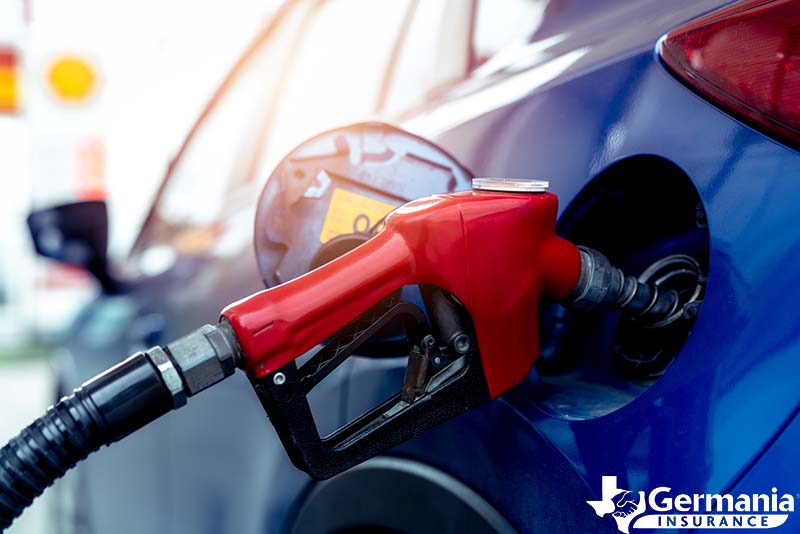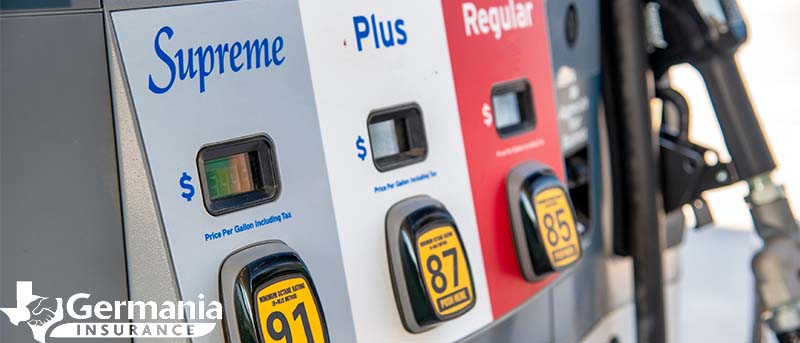Learn about the different types of gasoline for your car and how to choose the right type for you.

When you’re at the gas pump, you’ll notice that there are usually two or three different types of gas with different octane ratings. Often, you’ll see a regular, mid-grade, and premium. Each has its own octane rating, but what do these ratings actually mean? Is premium gas actually better for your car? What type of gas should you be putting in your vehicle? The answers to these questions may be more important than you think!
Fueling up your car is an essential part of using and maintaining it. Understanding the types of gasoline and fuel grades will help you make a more informed decision about which type of gasoline you should be putting in your vehicle. Today, we'll cover the different types of gas you might find at the pump and discuss the differences between them. Read on!
What is an octane rating?
An octane rating is a measure of the stability of the fuel. These ratings are based on the pressure at which the engine auto-ignites. Basically, it measures how well the gasoline is able to prevent pre-ignition. Car engines fire at a specific time, and if it happens too early, then the engine can make knocking sounds and sustain damage.
The octane number is the average of two different ratings—motor octane rating (MOR) and research octane rating (RON). The higher the number, the more stable the fuel is. The number you’ll see on that yellow sticker at the pump is the minimum octane rating.
Different types of gas
Depending on where you go to fill up, you may see different names for types of gas. While the names may vary, they are all based on the gasoline grades. If you’re unsure, just look at the yellow sticker that has the fuel grades displayed to better understand what type of gasoline you’re getting.
Here are some of the different types of gas you might see at the gas station:
Regular gas
Regular gas has the lowest octane rating. Typically, the octane rating for regular gas is 87 in most states, which is the number you’ll see on that yellow sticker at the pump. The majority of vehicles on the road today are built to run on regular gasoline.
Mid-grade gas
Mid-grade gas is a middle-range octane fuel. It typically has a fuel rating of 89-90. The difference between 87 and 89 octane gasoline is simply the gasoline’s ability to stabilize.
Premium gas
Premium is the highest octane fuel with a 91-94 octane rating. While most cars are fine running on regular gasoline, high-performance engines have features that require premium gas to run their best. Premium gas is often needed for large, heavy-duty vehicles or sports cars.
Leaded gas
Leaded gas contains lead additives. It is no longer offered at commercial gas pumps in the United States. However, lead is still used in fuels for race cars because it offers an octane booster. This type of gas is often recommended for race cars with carbureted engines and those without oxygen sensors.
If you somehow have access to leaded fuel, you should never use it in a standard vehicle as it can ruin your catalytics converter.
Unleaded gas
You may see "unleaded gasoline only" somewhere on your car, which at this point is an unnecessary reminder, but that wasn't always the case. In the earlier days of the automotive industry, tetraethyl lead was a common additive for gasoline because it helped engines run better. However, lead is incredibly poisonous and it began to cause health problems all across the country. Manufacturers began removing lead from gasoline in the 1970s, but it wasn't completely removed in the United States until 1996. Even then, many countries around the world still used leaded gasoline and only in recent years has it been completely phased out of the global gasoline supply.
Today, this type of fuel is used in vehicles all over the world, and it’s most likely the type of gas you’re already using.
Diesel fuel
Diesel fuel is a type of fuel that only works in vehicles with diesel engines, which are engines that use compression ignition. Vehicles that typically require this type of fuel are freight trucks, delivery trucks, trains, buses, boats, farm vehicles, construction vehicles, and military vehicles. You'll also find diesel engines in many heavy-duty pickup trucks and even in some cars and sedans.
Flex fuel (or E85)
Flex fuel, also known as E85, is 15% gasoline and 85% plant-based, renewable ethanol. Ethanol is made of renewable resources like corn and soybeans, so the price at the pump is lower than standard gasoline. However, ethanol has less chemical energy than gasoline so it often offers reduced fuel economy. FlexFuel vehicles are the only vehicles that should use this type of fuel.
Premium vs. regular gas
Now that you know a little bit about octane ratings, you may be wondering, “What’s the difference between premium vs. regular gas?”
Aside from their octane ratings, the
difference between regular and premium gas comes down to what type of vehicle you’re driving. If your vehicle has an engine with a high compression ratio or turbocharger, then you may need premium gas to maintain optimal performance and fuel efficiency.
Using premium gas on a vehicle that is optimized to run on regular gasoline will not improve its performance or offer any special benefits. Basically, you’ll just be spending more at the pump without any real advantages; you may damage your wallet, but it won't damage your engine.
On the other hand, filling up a car that needs premium gas with regular gas can impact the performance and fuel efficiency of the vehicle. While premium gas is more expensive, it allows people driving cars with engines that have a high compression ratio to get the most out of their vehicle in terms of horsepower and miles per gallon.
Some vehicles (especially older models) that require premium gas may experience an
engine knock when running on low octane gas. However, most cars today have sensors that help prevent that knock and engine damage—making it okay to occasionally fill up with lower octane gas when the premium isn’t available. You can also mix premium and regular, which predictably results in an octane rating somewhere in between the two. While neither of these options are recommended on a regular basis, you don't have to worry about ruining your engine if you need to use regular gas or a mixture in a pinch.
Which type of gas should I use?
It’s vital to use the type of gasoline that is the best fit for your vehicle. Using regular gas when your car should take premium or using diesel or FlexFuel when you need unleaded gasoline can cause issues for your car. Not only can it cause your vehicle to malfunction, but it can also have a big impact on your fuel economy.
Once you find the right fuel for your car, you’ll be able to optimize performance and fuel efficiency. When in doubt, check your owners’ manual or visit the vehicle manufacturer’s website to determine which type of gas is best for your car.
 To learn more about Germania Insurance and our products, request a free quote online or reach out to your local Germania Authorized Agent today!
To learn more about Germania Insurance and our products, request a free quote online or reach out to your local Germania Authorized Agent today!